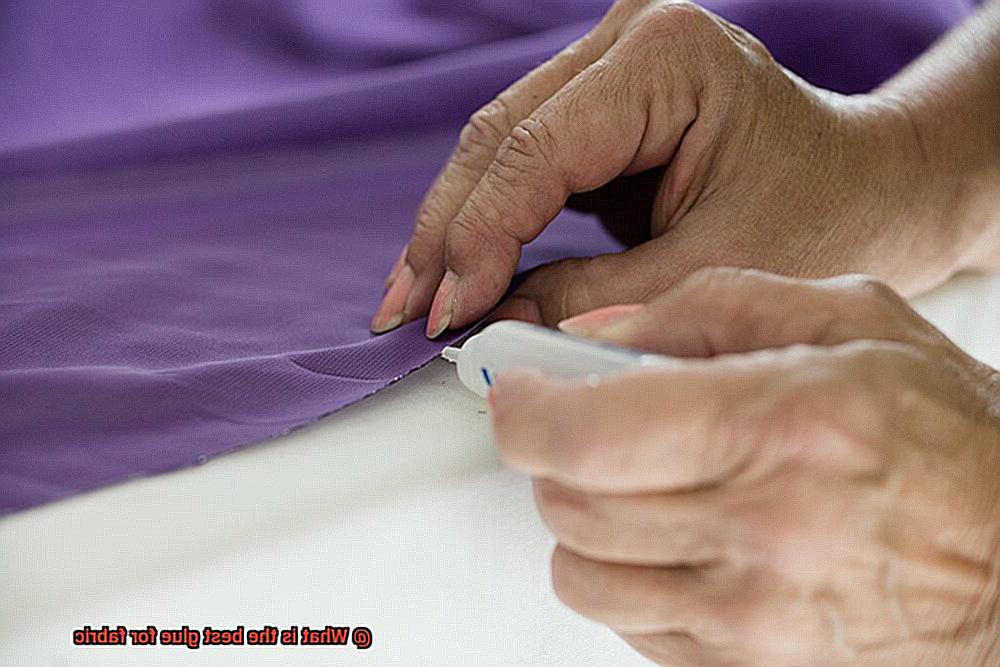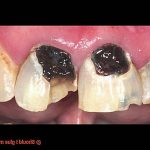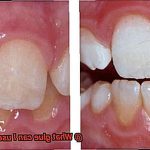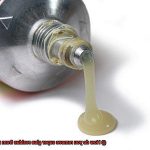Are you tired of the frustration that comes with finding the right glue for your fabric projects? Have you ever watched your hard work unravel because the glue just couldn’t keep up? Well, fear not my friend, because I’m here to help you discover the best glue for fabric.
The perfect glue can make or break a project, whether it’s a simple hem or a complex DIY clothing project. But how do you find the ideal adhesive for your fabric needs?
In this blog post, we’ll delve into the various types of glues available on the market and their pros and cons. We’ll also explore which types of fabrics each glue is best suited for and what factors to consider when choosing one, such as drying time and washability.
We’ll even introduce you to some of the best fabric glues out there, including liquid adhesives, fabric glue sticks, and glue guns. You’ll learn how to use them effectively to achieve perfect results every time.
So let’s dive in together and find that perfect glue for your next project. By the end of this post, you’ll be equipped with all the information you need to choose wisely and create stunning fabric masterpieces.
What is Fabric Glue?
Contents
If you’re a fan of fabrics, then you know that fabric glue is an essential adhesive that can help you create all kinds of amazing projects. Unlike traditional glues, fabric glue is specially formulated to bond fabric materials together without causing any damage or discoloration. There are several types of fabric glue available on the market, each with its own unique properties and benefits.
One popular choice for many DIY enthusiasts is water-based fabric glue. This type of glue is versatile and easy to use, as it can be washed out with water and doesn’t require any special equipment or techniques to apply. Whether you’re working on sewing, quilting, or crafting projects, this type of glue is a great choice for a wide range of fabrics.
For those who require a stronger and more durable bond, solvent-based fabric glues are another option to consider. However, it’s important to keep in mind that these glues can be more challenging to work with and may require special handling or ventilation due to their strong fumes.
Hot glue is yet another popular choice for bonding fabrics quickly and effectively. It sets quickly and provides a strong bond between fabrics, making it ideal for projects that require a temporary fix or where speed is of the essence. However, hot glue can be messy and difficult to remove if applied incorrectly, so it’s important to use it with care.
When selecting the right fabric glue for your project, there are several factors to consider. The type of fabric you’ll be working with, the strength of the bond required, and any specific application requirements such as washability or flexibility are all important considerations. Reading product reviews and consulting with other crafters or sewing enthusiasts can also be helpful in determining which type of fabric glue will work best for your particular project.
Advantages of Using Fabric Glue
If you’re a fan of DIY projects or simply enjoy fixing things, then you’ll definitely want to consider adding fabric glue to your crafting toolkit. This increasingly popular adhesive solution provides numerous advantages over traditional sewing methods that can save you both time and money.
One of the most significant advantages of using fabric glue is its ability to save you time. With no need to thread a needle or worry about perfect stitches, fabric glue can easily and quickly bond fabrics together for any quick repairs or attachments.
Another advantage of fabric glue is its versatility. It can work on a wide variety of materials such as cotton, denim, silk, and leather, making it an ideal choice for hemming, attaching patches or appliques, and even creating new designs.
Apart from its versatility, fabric glue also creates a durable bond that can withstand washing and drying. It’s resistant to fraying and tearing, making it an excellent choice for repairing any rips or tears in clothing.
In addition to its durability, fabric glue is also highly convenient. It doesn’t require special tools or equipment and can be applied with a brush or directly from the bottle. This makes it a highly portable and versatile option for on-the-go repairs.
Lastly, fabric glue is an affordable alternative to sewing machines or professional alterations. Its availability in small quantities makes it ideal for small projects or repairs.
Hot Glue: Its Benefits and Drawbacks
Hot glue is a beloved adhesive that has become a go-to for many crafting projects, especially those involving fabric. But like any product, it has its pros and cons that are important to consider.
One of the major benefits of using hot glue on fabric is its quick drying time. This feature makes it a perfect choice for those who are working on time-sensitive projects and need to complete their work quickly. Additionally, hot glue offers a strong bond that can withstand regular wear and tear. This ensures that your projects will last longer and remain durable.
However, there are also some drawbacks to using hot glue on fabric. Firstly, removing hot glue can be challenging once it has been applied. This can be frustrating if you make a mistake or need to adjust your project. Secondly, hot glue may not be the best option for delicate fabrics as it can cause damage or discoloration.
It’s essential to note that not all hot glues are created equal. Some hot glues are specifically formulated for use with fabric and offer a more flexible bond that won’t crack or break over time. When selecting a hot glue for your fabric project, be sure to choose the right type based on your specific needs.
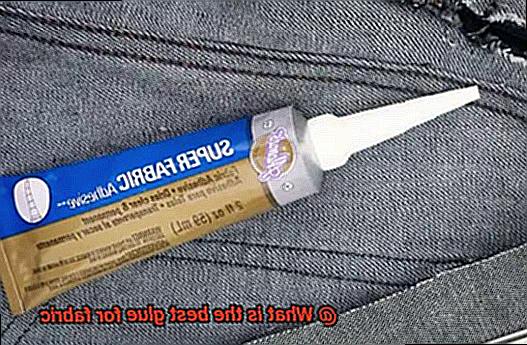
Spray Adhesives: Pros and Cons
And let me tell you, there are some advantages and disadvantages to consider before using them.
Let’s start with the positives. Spray adhesives are incredibly convenient. They come in handy aerosol cans that make it easy to apply the adhesive quickly and without a mess. Plus, they provide a strong and durable bond that can withstand wear and tear over time.
Spray adhesives are also versatile. They can be used on a variety of fabrics, including delicate ones like silk and chiffon. And if you’re working on a larger project that requires a lot of adhesive, spray adhesives can cover a large surface area quickly.
However, there are some downsides to using spray adhesives as well. One of the biggest challenges is controlling the application. If you’re not careful, overspray or uneven application may occur, resulting in sticky residue on surrounding surfaces or fabric areas that were not intended to be bonded.
In addition, there’s the potential danger of harmful fumes being emitted during use. It’s crucial to use spray adhesives in a well-ventilated area to avoid any health risks associated with inhaling these fumes.
Despite these drawbacks, spray adhesives remain an excellent choice for quick fabric bonding jobs. Just be sure to read the instructions carefully and take precautions when using them.
Factors to Consider When Choosing the Best Glue for Fabric
Choosing the perfect glue for fabric can make or break your project. But fear not, with six crucial factors to consider, you’ll be able to select the best adhesive and achieve an outstanding outcome.
First and foremost, the type of fabric is vital. Different types of fabric require different types of glue, so it’s essential to choose an adhesive that’s appropriate for your specific material. For instance, delicate fabrics like silk or wool necessitate a specialized adhesive.
Secondly, consider the purpose of your project. If you require a strong bond, then opt for a heavy-duty adhesive. However, if flexibility and movement are needed, then a more flexible glue is ideal.
Drying time is also essential. A fast-drying glue is necessary for projects that require quick assembly. But if you have more time, choose a slower-drying adhesive.
If you’re working with light or sheer fabrics, a clear or transparent glue that won’t show through is ideal. For darker fabrics, color may not matter as much.
Washability is another significant factor to consider. If your project involves fabric that will be frequently washed or exposed to moisture, select a waterproof or water-resistant adhesive.
Lastly, consider the toxicity and odor of the glue. Some adhesives contain harmful chemicals or emit strong fumes that can be dangerous to handle or inhale. If you have any concerns about toxicity or odor, opt for a non-toxic and low-odor glue.
mORL1jJSdlk” >
Conclusion
In the world of fabric crafting, finding the perfect adhesive can make all the difference. But with so many options out there, it’s easy to feel overwhelmed and unsure of where to start. Fear not. Armed with the knowledge from this blog post, you’ll be able to confidently select the best glue for your unique project.
When choosing an adhesive, consider factors such as fabric type, drying time, washability, toxicity, and odor. With these in mind, you can narrow down your choices to water-based or solvent-based fabric glue, hot glue, or spray adhesives.
Each type has its own set of pros and cons that should be carefully weighed before making a decision. Hot glue may offer a quick-drying and strong bond but may not be ideal for delicate fabrics. Spray adhesives are convenient but require a steady hand to avoid overspray or uneven bonding.
Fabric glue is a versatile and affordable option that offers numerous advantages over traditional sewing methods. It saves time and provides a durable bond that can withstand washing and drying. Plus, it’s incredibly convenient to use.
In summary, choosing the best glue for fabric requires thoughtful consideration of various factors.

